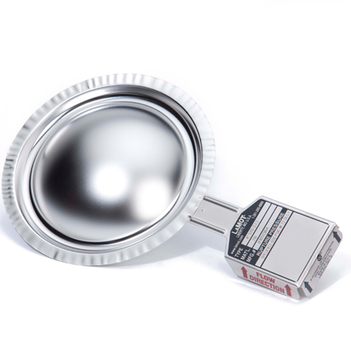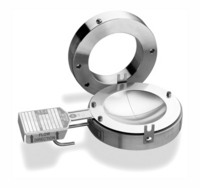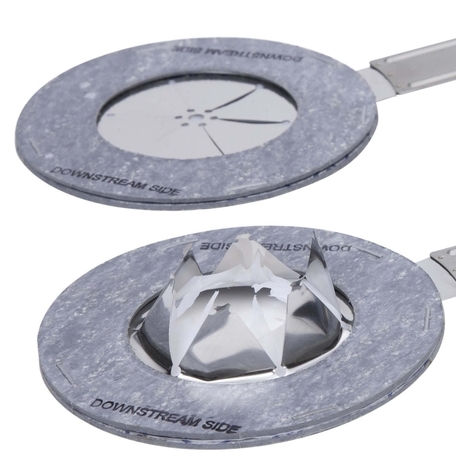Rupture discs are pressure relief devices that are designed to burst at a set pressure in order to release excess pressure in a given system.
General Information
Rupture discs prevent pressure from building to a dangerously high level by bursting to relieve system pressure. The disc will burst at a set change in pressure across the disc. A rupture disc can also protect against suction when vacuum conditions are present. The disc can be calibrated to burst if a specific differential suction pressure is present, preventing suction damage on equipment.
Equipment Design
Rupture discs consist of a disc and a holder. The holder clamps the disc by its circumference and connects the disc to the system piping. The disc is the pressure-sensitive portion, and is more commonly made out of metal, but can be made out of graphite, tension-loaded materials, or composites depending on the pressure at which it is designed to rupture. The rupture pressure is entirely dependent on the material of the disc. Often rupture discs are custom ordered, with a coating to protect them from corrosion due to the particular set of chemicals that they are in contact with during operation. Common coating materials include lead and polyvinylchloride.
Discs are dome-shaped, which gives rise to two types of rupture discs based on the dome orientation in the system. A rupture disc is forward-acting if the metal is domed in the direction of the fluid pressure. A rupture disc is reverse-acting if the metal is domed in the opposite direction of the fluid pressure. Forward-domed discs burst because of tensile forces. Reverse-domed, or reverse-buckling, discs burst because of compression forces.
As pressure is increased near a forward-domed disc, the dome starts to expand. If pressure continues to increase the metal will continue to expand causing a thinning of material in the center of the dome. Eventually, the tensile force becomes too great, and the disc bursts. The burst originates in the center of the dome.
As pressure is continuously increased near a reverse-buckling disc, the dome expands where the disc connects to the holder. The disc eventually bursts along with the connection between the holder and the dome. Reverse-buckling discs have a lower rupture pressure than forward-domed discs, however, their performance is less sensitive to temperature.
Discs performance may be enhanced by supports and cuts. Vacuum supports may be installed to help prevent collapse under vacuum pressure. A disc may be pierced and cut, or scored, to reduce the rupture pressure.
Usage Examples
The main function of a ruptured disc is for safety considerations. Rupture discs often use two discs for every holder. This is done to prevent leaking, especially if the fluid is corrosive. Another common use of rupture discs is in conjunction with pressure relief valves. The advantages of utilizing both PRVs and rupture discs together are to ensure system safety under a broader range of possible failures. The advantages of the combined use of PRVs and rupture discs are outlined below.
Advantages
- May be used when solids are suspended in the system fluid.
- Performs well at low temperatures.
- Performs well with viscous fluids.
- Often used along with PRVs for added protection.
- If used with a PRV, the rupture disc will prevent fluid leakage through the PRV, prevent deposits from hindering PRV performance, and reduce the cost of maintaining a PRV.
- Reverse-buckling discs are less dependent on temperature and are therefore better for high-temperature systems.
Disadvantages
- Disc performance is greatly affected by temperature because temperature effects disc material brittleness.
- A burst rupture disc cannot be resealed.
Acknowledgements
References
- Crowl, Daniel A., Louvar, Joseph F. Chemical Process Safety: Fundamentals with Applications. New Jersey: Prentice Hall P T R, 1990. Print.
- Doyle III, Francis J., Edgar, Thomas F., Mellichamp, Duncan A., and Seborg, Dale E. Process Dynamics and Control . 3rd ed. New York: John Wiley & Sons, 2011. Print.
- Guidelines for Pressure Relief and Effluent Handling Systems . New York, NY: Institute, 1998. Web.
- Mukherjee, Siddhartha. Pressure-Relief System Design . Chemical Engineering, November 0 – 45.
Developers
- Eric Giuffrida
- Michael Andrews



